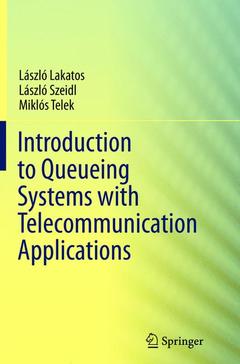Description
Introduction to Queueing Systems with Telecommunication Applications, 2013
Language: English
Subjects for Introduction to Queueing Systems with Telecommunication...:
Publication date: 01-2015
Support: Print on demand
Replaced by new edition: Access to the new edition.
Publication date: 12-2012
388 p. · 15.5x23.5 cm · Hardback
Replaced by new edition: Access to the new edition.
Description
/li>Contents
/li>Biography
/li>Comment
/li>
The book is composed of two main parts: mathematical background and queueing systems with applications. The mathematical background is a self containing introduction to the stochastic processes of the later studies queueing systems. It starts with a quick introduction to probability theory and stochastic processes and continues with chapters on Markov chains and regenerative processes. More recent advances of queueing systems are based on phase type distributions, Markov arrival processes and quasy birth death processes, which are introduced in the last chapter of the first part.
The second part is devoted to queueing models and their applications. After the introduction of the basic Markovian (from M/M/1 to M/M/1//N) and non-Markovian (M/G/1, G/M/1) queueing systems, a chapter presents the analysis of queues with phase type distributions, Markov arrival processes (from PH/M/1 to MAP/PH/1/K). The next chapter presents the classical queueing network results and the rest of this part is devoted to the application examples. There are queueing models for bandwidth charing with different traffic classes, slotted multiplexers, ATM switches, media access protocols like Aloha and IEEE 802.11b, priority systems and retrial systems.
An appendix supplements the technical content with Laplace and z transformation rules, Bessel functions and a list of notations. The book contains examples and exercises throughout and could be used for graduate students in engineering, mathematics and sciences.
These books may interest you

Queueing Theory 1Advanced Trends 171.59 €



